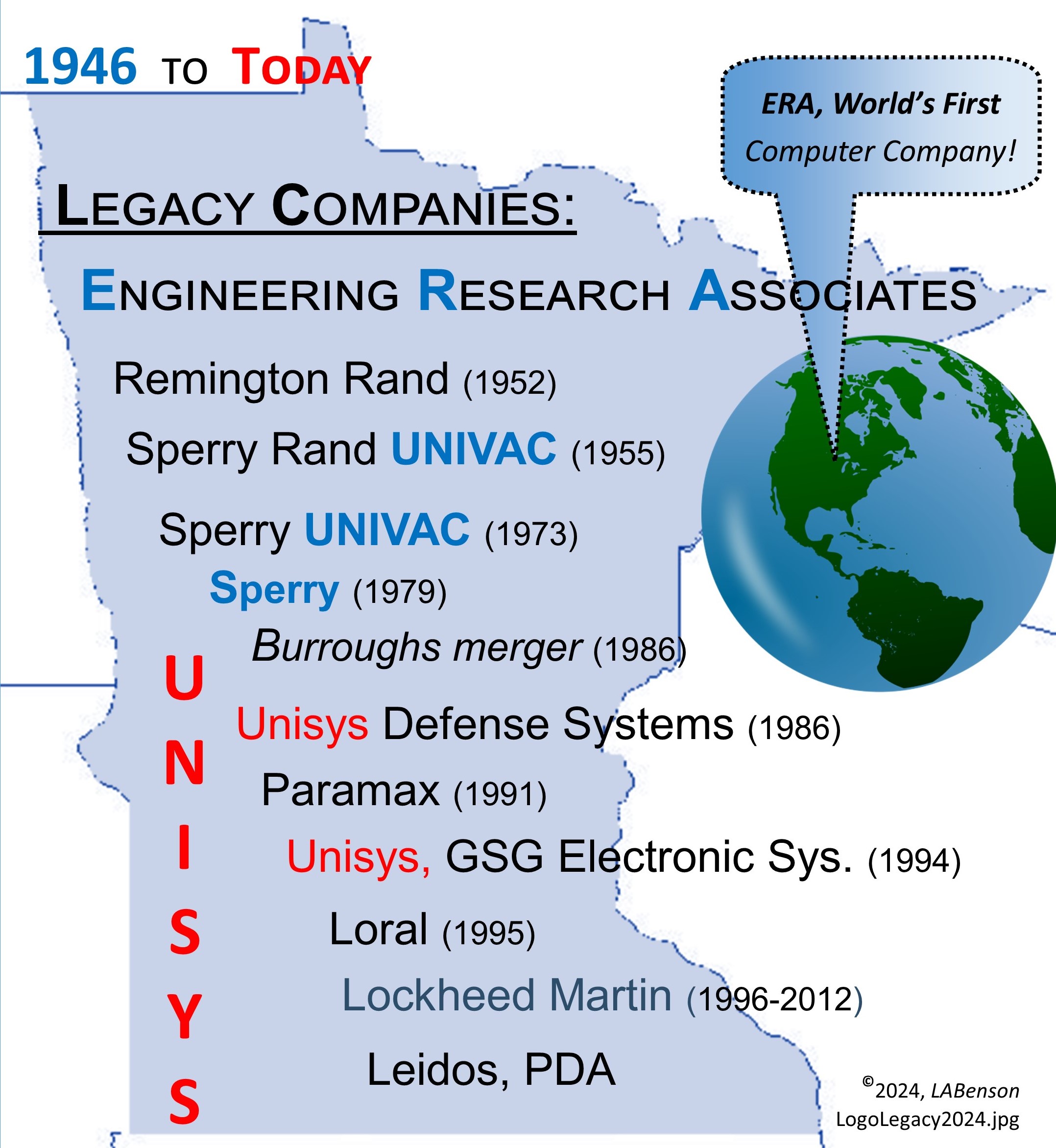

Information Technology (IT) Pioneers
Retirees and former employees of Unisys, Lockheed Martin, and their heritage companies
Legacy Exhibits, Chapter 90
When the Legacy Committee began in 2005, one long term objective was to find a permanent place to display our artifact collection. In 2011 the Dakota County Historical Society (DCHS) agreed to accept donations of artifacts and to establish a permanent exhibit at the Lawshe Memorial Museum in S St. Paul. Thanks to VIP Club members emeriti Bernie Jansen and Millie Gignac who worked with then DCHS Executive Director, Chad Roberts to get the 'ball rolling'. The VIP Board and Legacy Committee are grateful for the hundreds of hours which John Westergren put in arranging for the transfer of the artifacts collected over seven years and stored at the Eagan, LMCO facility from 2006 through 2012.
There were already two small 'artifact' display sites in Minnesota; at the UNISYS Eagan facility and at the Minnesota Historical Society's Museum in St. Paul. Neither was positioned to become a permanent exhibit location. The Charles Babbage Institute only accepts two dimensional objects thus by policy couldn't do permanent hardware displays. We know of other museums which have a few 'UNIVAC/Sperry/Unisys' items displayed, listed at the right and detailed in section 6 below. We indeed appreciate their preservations of ERA's IT Legacy. "The wellspring of Minnesota's computer industry" was published by Sperry in 1986 providing a written foundation for our early years.
1.0 Lawshe Memorial Museum - S St Paul, MN
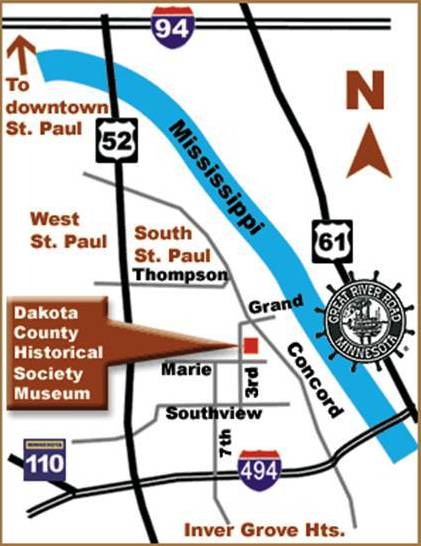 More defense-industry computer artifacts than any
other museum in the world!
More defense-industry computer artifacts than any
other museum in the world!
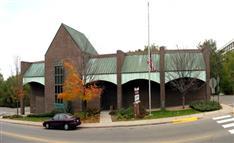 Our Realization of a Dream
article relates the history of the beginning of the exhibit(s) at
this museum. With over 1,000 artifacts that range from
individual Printed Cards to operator workstations to full sized
computers, we proclaim this to be the world's largest collection of
defense industry hardware items.
Our Realization of a Dream
article relates the history of the beginning of the exhibit(s) at
this museum. With over 1,000 artifacts that range from
individual Printed Cards to operator workstations to full sized
computers, we proclaim this to be the world's largest collection of
defense industry hardware items.
An upstairs multi-purpose room in the room has a
donated suite of five workstations
where Club volunteers are cataloging some ~20,000 photos,
slides, and films. There is also a small collection of documents and
books available for researchers to peruse during museum business hours,
Lawshe Memorial Museum (dakotahistory.org). And we have
over 150 repertoire and maintenance
cards - scanned and linked from this site's computer
chapters.
The Dakota County Historical Society had a grant from the state
of Minnesota to solicit exhibit ideas and down select from those
ideas to develop specific history poster board topics. Retiree
volunteer Keith Myhre developed the original listing of history
topics in section 3.1, ..., 3.5 below. Sixteen exhibit posters
were developed under this grant in 2014/15. Within the listing
are links to those poster pdf files or to chapters on this web site
which provide expanded topic details.
In 2021 an ADA structural enhancement project started, thanks to funding from the Dakota County Board of Commissioners
- completion slated for winter of '22/'23. A second phase during the
fall of 2024 upgraded the upper level including a new conference
room and enhanced 'work space' for our volunteers to continue
entering objects and photos into a data base.
Volunteering
 In January 2023 volunteers reset the museum displays. Thanks Les
Nelson, Bob Pagac, Keith Myhre, Lowell Benson, and Jim Andrews. We five have about 75
years supporting the legacy initiative. Our employment totaled 181 years working for
our heritage companies from 1960 to 2011 – the longest 44-yrs,
shortest 19-yrs. All have mini bios on this Legacy Anthology
web site. All were at the ERA Plaque unveiling June 15th,
2023. Four of us worked on P-3C projects part of our careers. Four of us have
EE degrees. Three retired from the company this century. Three served on the VIP Club
board. Three spent some time working in Germany. One was at the first Sperry
Syttende Mai celebration, in 2015 he received the Club’s 1st
Volunteer Extraordinaire award.
In January 2023 volunteers reset the museum displays. Thanks Les
Nelson, Bob Pagac, Keith Myhre, Lowell Benson, and Jim Andrews. We five have about 75
years supporting the legacy initiative. Our employment totaled 181 years working for
our heritage companies from 1960 to 2011 – the longest 44-yrs,
shortest 19-yrs. All have mini bios on this Legacy Anthology
web site. All were at the ERA Plaque unveiling June 15th,
2023. Four of us worked on P-3C projects part of our careers. Four of us have
EE degrees. Three retired from the company this century. Three served on the VIP Club
board. Three spent some time working in Germany. One was at the first Sperry
Syttende Mai celebration, in 2015 he received the Club’s 1st
Volunteer Extraordinaire award.
Contact any of us for Tuesday Morning 'work' sessions help
or Jon Simon who missed the re-set day. Snapshot by Matt Carter.
2.0 “The Birth of Minnesota’s Computer Industry – A Photo Essay”
The displays are and will be located around the periphery of the
Museum's Great Hall as shown in a preliminary set-up in this photo.
The
topics listed below have links to storyboard posters developed by volunteers at
the Lawshe Memorial Museum as well as this site's articles about
the topics.
2.1 Company History
- How/why ERA was formed [poster #1]
- Evolution of Twin Cities operations from ERA to Unisys/Lockheed Martin [poster #16]
- “The Original Geek Squad”
- Spin-off companies
- Well known people who began their career at ERA/Univac: a. Seymour Cray, b. Bill Norris, c. Erwin Tomash, d. Bob McDonald, e. Dr. Sid Rubens, g. Arnold Cohen h. Jack Hill, and i. Frank Mullaney.
- Fred Hargesheimer Story, a WWII veteran who gave back to his south sea island 'rescuers.'
- Land of 10,000 engineers: UNIVAC and the University of Minnesota. [poster #4]
2.2 Company Facilities
- Twin Cities buildings used by ERA to Unisys/Lockheed Martin [poster #7]
- U.S. Navy office & personnel at Plant 2 in St. Paul [poster #2]
- Evolution of employee offices/workspaces over the decades
- Remote U.S. Facilities
- Foreign Facilities
- Marketing (Washington, DC)
2.3 Employees
- Employee Relations/Human Resources changes over the years: a. Hiring practices, b. Benefits, c. Starting wages
- Company supported community activities: a. Winter Carnival, b. Aquatennial, and c. United Way
- Company supported employee social activities: a. Softball, b. Football, c. Basketball, d. Ski club, e. Bowling, and f. Camera club
- Business attire over the decades
- Company/Union history over the decades

2.4 Technology
- Evolution of Univac/Unisys commercial computers
- Evolution of military computer family [poster #9]
- Semiconductors at Univac: [poster #13] Resource: Mike Svendsen Legacy Paper & Larry Bolton papers.
- Evolution of software:
- Binary - Assembly language - Compilers:
- Assemblers, Compilers
- Commercial languages adapted for DoD use
- Structured software development process
2.5 Products/Systems/Applications/Departments
- The early systems [poster #3] were classified as secret or top secret because of their development for specific government agencies.
- Ground based guidance computers for the Athena program [poster #5]
- Antenna Couplers and the beginning of computerized flight reservation systems. [poster #6]
- MAPPER - [poster #8] Maintaining, Preparing, and Producing Executive Reports
- A world leader in the development of Air Traffic Control Systems [poster #10]
- Our computers and systems software [poster # 11] accomplished the Hunt for Red October!
- The B-2 stealth bomber [poster #12] benefitted from our computer technologies.
- Your evening weather reports [poster #14]
- The continuing Naval Tactical
Data Systems [poster #15]

3.0 Unisys, Eagan Minnesota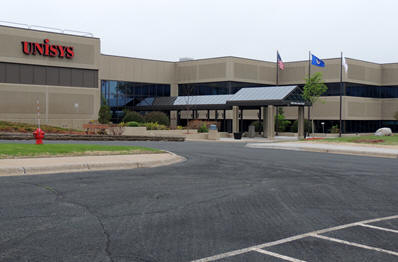
Sperry-UNIVAC in Roseville had an earlier sense of history in the 80s, thus began to illustrate computer technologies with a series of wall mounted shadow box displays. Harry Smuda [Management] and Dick Petschauer [Engineering] led the creation of these shadowboxes. After the Burroughs buyout of Sperry in 1986; the resulting UNISYS Company kept the displays - adding to them as new commercial computer systems were developed in the 90s.
During the summer of 2017, UNISYS management moved the shadowboxes from Roseville to Eagan the summer to preserve our history.
.jpg) Unisys
Roseville was in operation 1964 to 2017. Unisys Eagan opened in 1987,
consolidating several Sperry and Burroughs Twin Cities facilities in
this facility on Pilot Knob Road. Our thanks to retirees
LeRoy Larson and Tom Curie who volunteered their time to refurbish
the wood frames of the shadowboxes before they were mounted on the
walls of the Eagan facility.
Unisys
Roseville was in operation 1964 to 2017. Unisys Eagan opened in 1987,
consolidating several Sperry and Burroughs Twin Cities facilities in
this facility on Pilot Knob Road. Our thanks to retirees
LeRoy Larson and Tom Curie who volunteered their time to refurbish
the wood frames of the shadowboxes before they were mounted on the
walls of the Eagan facility.
We celebrated the transfer of the Shadowboxes with an Open House and Legacy display on September 13, 2017 - Through the Ages. The first box in the picture at the left includes a pluggable vacuum tube chassis from the ERA/UNIVAC 1103. Mike Svendsen and Lowell Benson have documented the details of these boxes. The first has the 1953 1103 computer components, including a vacuum tube logic module. There is also one of these modules available for closer inspection in storage at the Lawshe Museum.
.jpg) A second set of shadowboxes displays the systems developed during the 80s; focusing
on some of the micro-technologies employed and technology from our Semi-Conductor
facility in Eagan - Click here
for detail pictures and descriptions of these seven shadowboxes
[FY-79 through FY-85.] When Burroughs bought Sperry to form
UNISYS, management decided to close the Eagan Semi-Conductor
facility thus the FY micro-technology developments and shadowbox
technologies ended.
A second set of shadowboxes displays the systems developed during the 80s; focusing
on some of the micro-technologies employed and technology from our Semi-Conductor
facility in Eagan - Click here
for detail pictures and descriptions of these seven shadowboxes
[FY-79 through FY-85.] When Burroughs bought Sperry to form
UNISYS, management decided to close the Eagan Semi-Conductor
facility thus the FY micro-technology developments and shadowbox
technologies ended.
4.0 Charles Babbage Institute, Minneapolis Minnesota
Although
CBI is the major repository of our collected documents [we've sent
them over 1,000], a photo on the wall of their main office [left] is
a drum memory collage showing various steps of the drum manufacturing
as well as various sizes of drums. The smallest was an airborne 2052
processor memory - being held in the engineer's hands. This collage
is about 4' x 7', originally hanging on the office wall of Bill
Norris' ERA/UNIVAC St Paul office.
When Mr. Norris left UNIVAC with others to found Control Data Corporation;
plant maintenance cleaned out his office - giving the collage to
Don Weidenbach, the young engineer
shown kneeling in the picture.
%20(800x791).jpg)
After being in Don's home office for over 50-years, Don donated the collage [right] to the Charles Babbage Institute - Dr. Tom Misa, Director of CBI [2006-17], is shown accepting the collage on behalf of CBI. An interesting part of our legacy is that the CBI Director holds the Engineering Research Associates Land Grant Chair for the History of Technology at the University's College of Science and Engineering.
Don passed away in April of 2022 at the age of 100, a month after his wife passed. My eternal thanks to Don for his lucid recollections of so many aspects of the ERA equipment, read Our Stories #278, March: 75-Years_ago.pdf - More of the story as Don Weidenbach was featured in a January 10th Minneapolis Star tribune article; peruse the request communications and reader feedback, facilitated by LABenson. .
The Babbage Institute is located at 222 21st Ave S #221, Minneapolis,
MN 55455. For more information, see
http://www.cbi.umn.edu/.
![]()
5.0 Minnesota Historical Society Museum, St. Paul Minnesota
This museum is located at 345 W. Kellogg Blvd. St. Paul, MN 55102. Their website is http://www.minnesotahistorycenter.org/exhibits
This facility has the original drum memory prototype* [left], the
great grandfather of today's computer hard drives. In 2006, Dick
Lundgren and Don Weidenbach met with then archivist Matt Anderson, and
convinced Matt to make this drum prototype a part of the Greatest Generation
exhibit. Wording on left of the poster is:
'Data processing storage drum (prototype) 1946 MHS Collections
This drum is a product of Engineering Research Associates of St. Paul. The company eventually became part of Sperry Rand, and then UNIVAC. when in operation, the drum rotated at 225 r.p.m. total storage capacity was around 24000 bytes of information (about 23 kilobytes or 0.00002 gigabytes.). The iron-oxide magnetic tape on the drum was made by
3M."
The Center of the poster
and left bottom picture is a micro-biography from Buelah May
Vivian Baines Swan who had worked at Control Data, Mn/DOT, a
clothing manufacturer and 26-yrs at the U.S. Postal Service where
she was the first black woman supervisor. This section came from
Voices of Rondo; Oral Histories of Saint Paul's Historic Black
Community, by Kate Cavett. {Editor's note: Ms. Swan is by the
cars in the picture.}
The right third of the presentation poster is the story of an
early lady programmer,
Jane Pejsa.
Jane kindly wrote her mini-biography for this Legacy anthology after
being contacted by Dick Lundgren.
Drum prototype delivery to the museum was effected by Norm
Palzer, http://vipclubmn.org/Articles/DrumLetter.pdf.
Supplementing the Drum Letter are sections 6.2.1 and 6.3.1 of
http://vipclubmn.org/Articles/LegacyCompendium.pdf.
Although not confirmed, MHSM may have an operator/maintenance console/panel
from a UNIVAC II - used in the ERA/UNIVAC plant in the early 50's
as St. Paul engineers developed the core memory for the UNIVAC II, a
Blue Bell follow-on to EMCC's UNIVAC I.
![]()
*Snapshots by Keith Myhre, December 2021, more information available
in Chapter 45, Memory Engineering.
6.0 Museums Away from Minnesota
Our traveling retirees have seen UNIVAC/Sperry/UNISYS 'relics' in several other cities including a Dulles Airport extension of the Smithsonian. The facilities listed hereunder contain one or more hardware artifacts.
6.1 Computer History Museum
The world's largest history museum for the preservation and presentation of artifacts and stories of the Information Age located in the heart of Silicon Valley; Computer History Museum. It is located at 1401 N. Shoreline Blvd Mountain View, CA 94043. They have a number of artifacts from Univac including a 642B computer as part of their NTDS exhibit.
The Computer History Museum offers a wide variety of information, exhibits, research and a rich library of multimedia content garnered from some of the most influential people of the computing era. Take some time to dig deeper into computing history and the one-of-a-kind information available here. There's something for everybody, they have an extensive set of history videos, http://tcm.computerhistory.org/videos.html.
6.2 USS Midway Museum
The USS Midway Museum is located at 910 North Harbor Drive, San Diego,
California, 92101,
alongside the Navy Pier;
http://www.midway.org/.
From Craig Neudahl: While on board the Midway Museum tour this month
I saw some familiar things from my past. I hired in at plant 1 to build
the UYK-20's. A plaque is at the right and units are at the
left.
The S-3A Viking computer [AN/AYK-10, Sperry type 1832] was a co-project
on the same test floor.
[snapshots taken 12/24/2015, posted 1/4/2016]
{Editor's note: Just under the edge of the wing fold is a mounted
Harpoon missle that was an add on when the
S-3A was updated to the
S-3B.}
In 2024 Roberta Oulicky Weems, daughter of Robert 'Bob' Oulicky, visited the USS Midway carrier museum and provided us with several snapshots of the 642B computer and associated equipment. First is the inertial Navigation System room. Second is the CP-642B computer that was installed in 1963. Third is the 642B interior. Fourth is an interface unit Fifth is the 1532 Man/Machine interface.
.jpeg)
.jpeg)
.jpeg)
.jpeg)
.jpeg) Thanks Roberta for providing these history snapshots.
Thanks Roberta for providing these history snapshots.
6.3 American Computer and Robotics Museum (ACRM)
This museum is located in Bozeman, MT. Their website is
http://www.compustory.com/.
They acquired an UNIVAC 418-II that was used in Houston during
the Apollo Moon Missions at the Mission Control Center. That
UNIVAC computer was implemented along with the three UNIVAC 493
computers for the reception of the telemetry data prior to it being
passed on to the IBM 360s on the other side of the room. In
operation since 1990, they advertize themselves as: "The American
Computer & Robotics Museum is the oldest continually operating
museum of its kind in the world.
Their https://acrmuseum.org/visit page has a scrolling set of pictures showing many of their artifacts, intresting to me personally as a 'wanna be' cryptoligist is that they have a WWII three rotor Enigma machine.
6.4 Vintage Computer Federation (See
www.vcfed.org for details.)
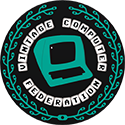
We were Mid-Atlantic Retro Computer Hobbyists (MARCH) from 2004-2015. That group was just a computer club. In 2015, we disbanded and reformed as a national non-profit, the Vintage Computer Federation (VCF), which then obtained 501(c)3 status. VCF then formed a Mid-Atlantic chapter to replace the old hobbyists group. The VCF local chapter operates as before, however the national organization is doing far more activities. For example, we acquired the Vintage Computer Festival West (to supplement our existing Vintage Computer Festival East), and we also acquired Vintage Computer Forum which is our hobby's largest discussion site. We have many other goals for 2017 and beyond -- incubate new chapters, restore more systems, and so on.
Our museum group in NJ has a Univac 1219B - This suite of equipment came from Johns Hopkins University Applied Physics Laboratory, where it was used to develop software for the Terrier Surface Missile System used on board many NAVY ships.
- We recently started doing some real work on it. Specifically, we made progress on a paper tape I/O console. Next, we're having power circuits installed to let us run the CPU and tape drive via its motor generator.
- We also want to build custom forklift pallets, do some cosmetic restoration, and build a modern educational exhibit for the systems.
To accomplish this (and other projects related to our organization
overall), we're hoping to raise $5,000 -- one dollar for each calculation
per second performed by the original ENIAC. The fundraising page is
http://vcfed.org/wp/contribute/
and, of course, it's tax-deductible. Thank you,
Evan Koblentz; Director, Vintage Computer Federation, a 501(c)3 educational
non-profit
The museum is part of the Info-Age Science History Museum and National Historic Landmark. Information Age Learning Center (InfoAge) is located at the old Camp Evans base in Wall, New Jersey which is listed on the National Register of Historic Places.
- InfoAge has an educational mission and its member groups in
addition to having unique exhibits are also working to preserve
Camp Evans for future generations.
The location is being developed as a Science Museum and repairs to its buildings are in progress to allow expansion of the Museum.
You are invited to join this excellent work to save history, honor the communication pioneers of wireless, WWI, WWII, space exploration and the cold war. - InfoAge the Science Museum, is a continuation of Camp Evans being a home to new and different organizations.
- The Information Age Learning Center (InfoAge)received a General Operating Support grant from the New Jersey Historical Commission, a division of the Department of State.
VCF East 7.0 - Computer Development at UNIVAC and Unisys - Al Rollin and Joe LaViola {Both are/were UNISYS Blue Bell Retirees' Group board members.}
6.5 The Vintage Technology Association
The Vintage Technology Association (VTA) is an electronics research group based in Dayton, Ohio, which specializes in obsolete military
and industrial technology. The VTA maintains a collection of over 10,000 devices, spanning over 100 years of electronics and
associated mechanical technologies. Our collection consists of a wide range of computers, calculators, test equipment, components,
documentation and other miscellany, including a large number of unique and significant artifacts. Although we try to include
specifications or documentation for an item, the focus of our content is historical context.
Our collection includes a
wide range of electronic instruments and components, as well as some
associated mechanical systems. Exhibits are organized by device
type, and documentation is provided when available.
http://www.decadecounter.com/vta/Micah Mabelitini, Curator (userid Accutron)
6.6 Southwest Museum of Engineering, Communications and Computation (SMECC)
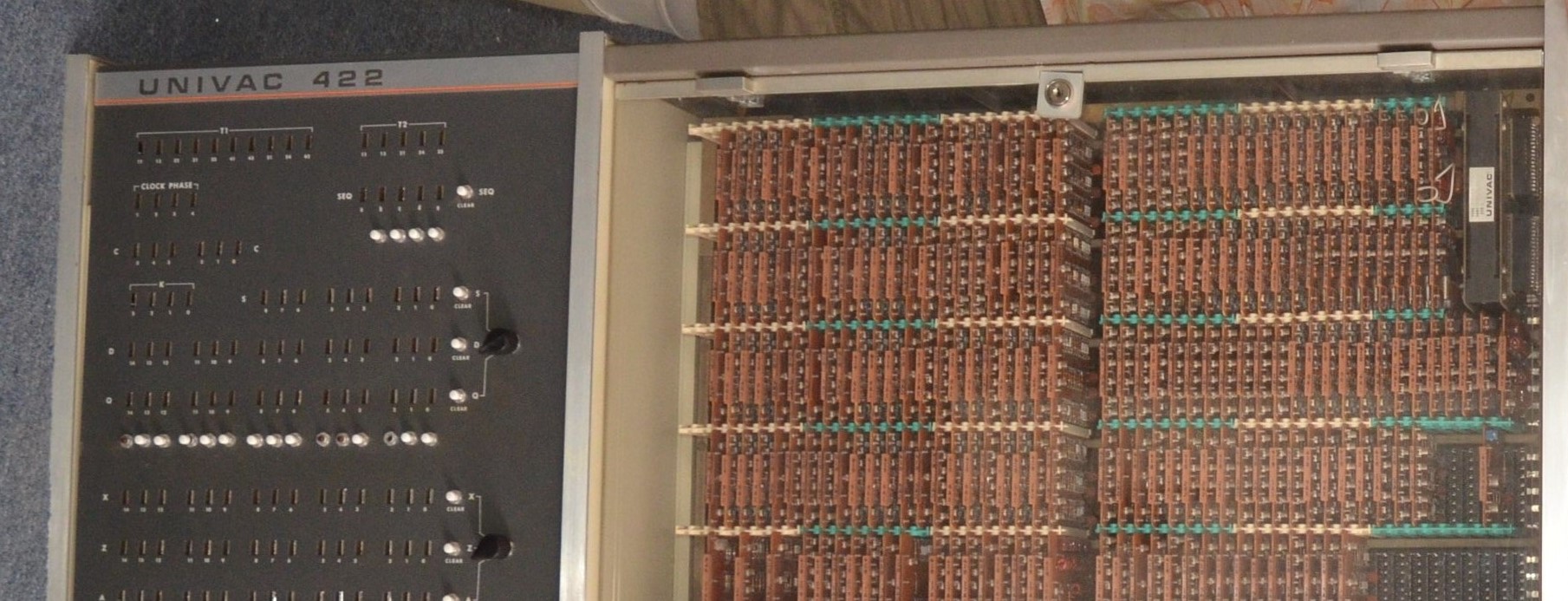 The archivist of http://smecc.org/ is Ed Sharpe.
This Glendale AZ facility and organization has an eclectic
collection of hardware and documentation history items on 49 linked
pages. Their mission is "Preserving Engineering,
Communications and Computation History." Their
http://smecc.org/univac_422.htm page has a tech-manual level
description of the unit, much more than the Legacy Committee has
gathered at either the Charles Babbage Institute or at the Lawshe
Memorial Museum. They do have a 422 unit.
The archivist of http://smecc.org/ is Ed Sharpe.
This Glendale AZ facility and organization has an eclectic
collection of hardware and documentation history items on 49 linked
pages. Their mission is "Preserving Engineering,
Communications and Computation History." Their
http://smecc.org/univac_422.htm page has a tech-manual level
description of the unit, much more than the Legacy Committee has
gathered at either the Charles Babbage Institute or at the Lawshe
Memorial Museum. They do have a 422 unit.
This page makes no mention of the 'military' brother, the CP788
nor the UNIVAC type number 1215, reference our
other computer
chapter.
The 422 computer was used in several vintage sitcoms/movies as
found by Keith Myhre,
http://www.starringthecomputer.com/computer.html?c=189.
6.7 System Source Computer Museum (SSCM)
This museum has a plethora of on-line resources, https://museum.syssrc.com/. It is incorporated as the Maryland Technology Museum, 501(c)3. Located at 338 Clubhouse Rd. Hunt Valley, MD - they post hours on their web site. Their artifacts include a Univac 490 and a Univac 1218 computer. And a wide variety of desktop and toy computers.
System Source has a computer museum displaying technology from the inception of computing. Founders Bob Roswell and Maury Weinstein opened Computer Land, a predecessor to System Source, in 1981. Rapid advances in technology in the early 1980’s made some Computer Land inventory obsolete before it could be sold. Bob and Maury’s old ComputerLand store on Redwood Street had a bank vault in the basement, so they filled it with vintage technology. Today, Bob exhibits the extensive collection in a museum space within System Source, an IT systems integrator in Hunt Valley, Maryland. Bob enjoys leading tour groups, sharing his memories of vintage computers and learning from his guests’ experiences. Of some interest to fellow Minnesotans, their software page has an emulator of 'The Oregon Trail'. This game originated at the University of Minnesota, https://museum.syssrc.com/artifact/software/1020/. The emulator functions on my home PC! [posted by LAB on 5/8/2020]
6.8 MIMMS Museum of Technology and Art
MIMMS was known as the Computer Museum of America
from 2019 to March 2025. One of the World's largest colletions of artifacts from the Digital revolution. MIMMS is located in a suburb of Atlanta, GA, was created to preserve this history, and educate visitors on the past and future of computing, empowering the innovators of tomorrow. They have 50 years of PC history, "Lonnie Mimms has spent the last few decades collecting artifacts from the earliest days of computing. In
2019, the Atlanta real estate developer opened the Computer Museum of America to showcase some of his 250,000-plus piece collection."
Location: 5000 Commerce Pkwy Roswell, GA 30076
An interesting excerpt from their site: "The Jacquard Loom inspired Charles Babbage’s idea for the Analytical Engine designed to use punched cards to feed mathematical numbers into a machine. Ada Lovelace observed, “The Analytical Engine weaves algebraic patterns, just as the Jacquard loom weaves flowers and leaves.” She is credited with writing the first computer program for the Analytical Engine. Unfortunately, Babbage’s machine and Lovelace’s program were not tested for another 100 years. The duo had indeed successfully created a way to program a machine for mathematical purposes."
6.9 Compuseum - A Modern Look at Computing's Past
The Compuseum is a charitable organization comprised of industry experts, techno-connoisseurs and everyday users from a broad range of backgrounds and experiences who celebrate the role of computers in our daily lives,
https://www.thecompuseum.org. Together we are build exciting exhibits while we gather momentum to build an interactive museum of hardware and software in the Philadelphia region; home of the ENIAC, the worlds first all electronic programmable computer.
We invite you to see, feel and interact with the technology and the people that made our digital age come alive.
LOCATION: Compuseum, Inc. Technology Center 137 North Wawaset Road West Chester, PA 19382-6735
[added by LAB on 12/22/2020].
6.10 Hagley Museum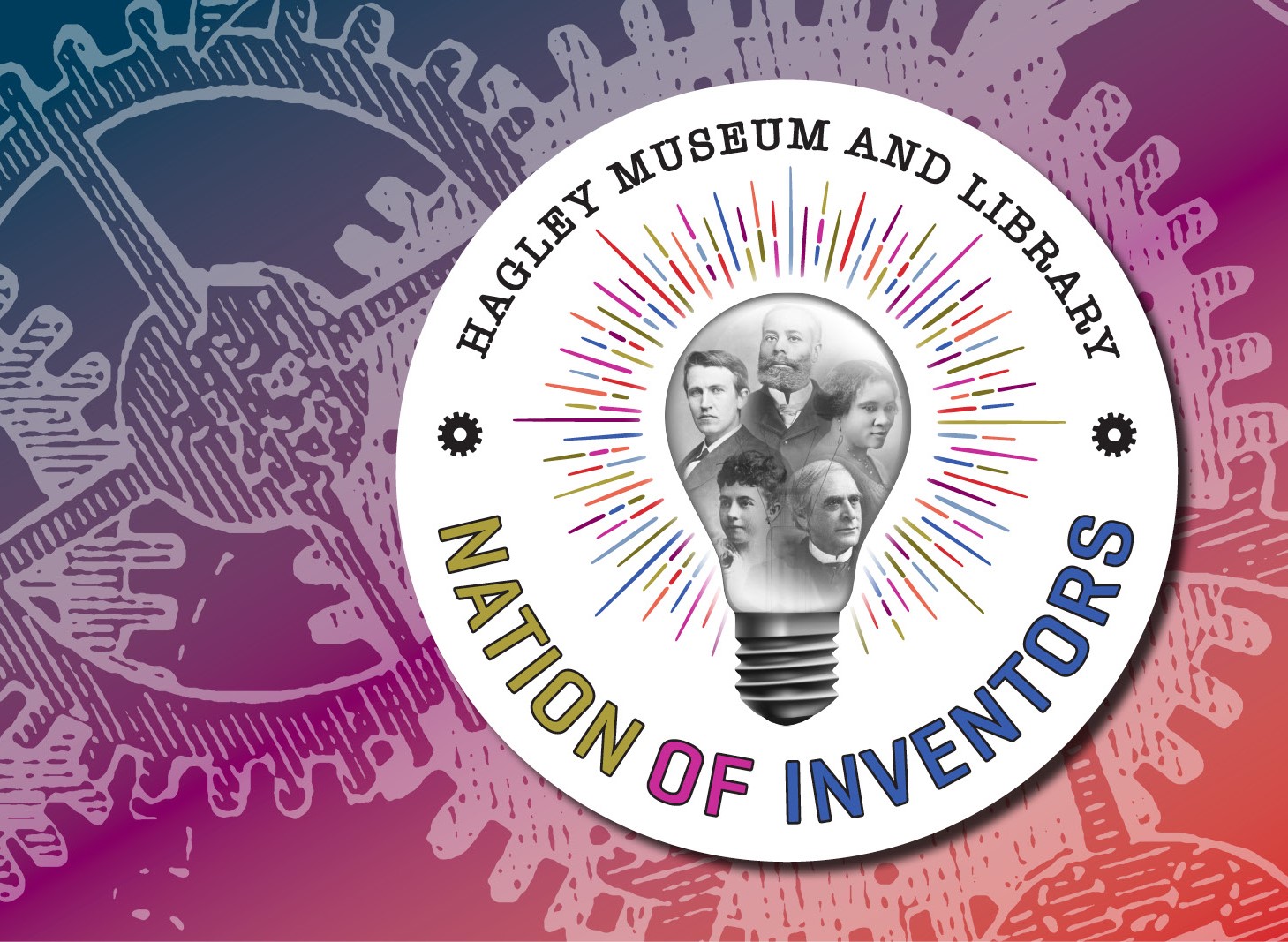
The Hagley Museum is at 200 Hagley Creek Road in Wilmington, DE 19087. Explore their site and the Research archives at
https://www.hagley.org/.
Located on 235 acres along the banks of the Brandywine river in
Wilmington, Delaware, Hagley is the site of the gunpowder works
founded by E. I. du Pont in 1802. This example of early American
industry includes restored mills, a workers' community, and the
ancestral home and gardens of the du Pont family.
Hagley's library furthers the study of business and technology in
America. The collections include individuals' papers and companies'
records ranging from eighteenth-century merchants to modern
telecommunications and illustrate the impact of the business system
on society.
Their collection includes the repository of history records from Sperry in Blue Bell, PA after Burroughs bought Sperry in
1986 to form Unisys. For example the Sperry computer type number document is archived for researchers quick access on our website,
BitsBakUp/GS3577%20Sperry%20Type%20Number%20Directory%20(January%201985).pdf.
[Section added by LAB on 3/26/2022]
6.11 Museum NT (Museum fur Nachrichentechnik)
![]() *This museum was assembled in February 2009 for an on-line
exhibition of electronic processors, technical equipment and technical descriptions,
http://www.museum-nt.de/menue/curator.html.
Their documentation, engineering concepts, and operational know-how are
from between 1930 and 1990.
Equipment is from CEI/Watkins-Johnson, Hewlett-Packard, Marconi, Rohde
& Schwarz, Telefunken, Tektronix, and sonst.
*This museum was assembled in February 2009 for an on-line
exhibition of electronic processors, technical equipment and technical descriptions,
http://www.museum-nt.de/menue/curator.html.
Their documentation, engineering concepts, and operational know-how are
from between 1930 and 1990.
Equipment is from CEI/Watkins-Johnson, Hewlett-Packard, Marconi, Rohde
& Schwarz, Telefunken, Tektronix, and sonst.
Of special interest to Our Legacy Anthology
 are their pages describing a SPERRY Univac AN/UYK-7 (V) computer set.
http://www.museum-nt.de/objekte/sperry_uyk7.html.
{a quote from their text "There is a good article written by Larry D. Bolton "The UNIVAC 7901000-series Integrated Circuits" that covers this topic."}
The museum staff has this UYK-7 'operational'. The displayed unit was part of a German NAVY data center located in Wilhelmshaven, Germany.
Two of the seven modules inside are marked with "Rheinland Pfalz", which was a class F122 frigate in the German Navy (Bundesmarine) stationed in Wilhelmshaven.
{
are their pages describing a SPERRY Univac AN/UYK-7 (V) computer set.
http://www.museum-nt.de/objekte/sperry_uyk7.html.
{a quote from their text "There is a good article written by Larry D. Bolton "The UNIVAC 7901000-series Integrated Circuits" that covers this topic."}
The museum staff has this UYK-7 'operational'. The displayed unit was part of a German NAVY data center located in Wilhelmshaven, Germany.
Two of the seven modules inside are marked with "Rheinland Pfalz", which was a class F122 frigate in the German Navy (Bundesmarine) stationed in Wilhelmshaven.
{
Slide 5 of SysDocImg/BN-WHV.pdf shows the location of Wilhelmshaven near the northwest coast of Germany.
Slide 6 shows the F122 program as part of the Univac/Sperry/Lockheed Martin projects with the German Government.
The primary UNIVAC/Sperry/LMCO office description during the F-122 program/project is on-line,
International.html#BadGodesberg.
Thanks to friend Duane Craps for
sending us the link.
*My apologies for possible errors translating from the German to English. LAB Posted on 7/14/2025 by LABenson
Chapter updated 10/22/2025.
In this Chapter
1.0 Lawshe Memorial Museum, South St Paul;
Volunteering stalwarts.
2.0 Photo Essay;
3.0 Unisys, Eagan;
4.0 Charles Babbage Institute, U of MN;
5.0 Minnesota Historical Society Museum, St Paul; and
6.0 Other Museums:
- 6.1 Computer History Museum
- 6.2 USS Midway Museum
- 6.3 American Computer Robotics Museum
- 6.4 Vintage Computer Federation
- 6.5 Vintage Technology Association
- 6.6 Southwest Museum of Engineering, Communications and Computation
- 6.7 System Source Computer Museum
- 6.8 MIMMS Museum of Technology and Art - was CMoA
- 6.9 Compuseum at Philadelphia
- 6.10 Hagley Museum in Delaware
- 6.11 Museum MT Museum fur Nachrichentechnik
This museum was assembled in February 2009 for an on-line exhibition of electronic processors and technical descriptions.
